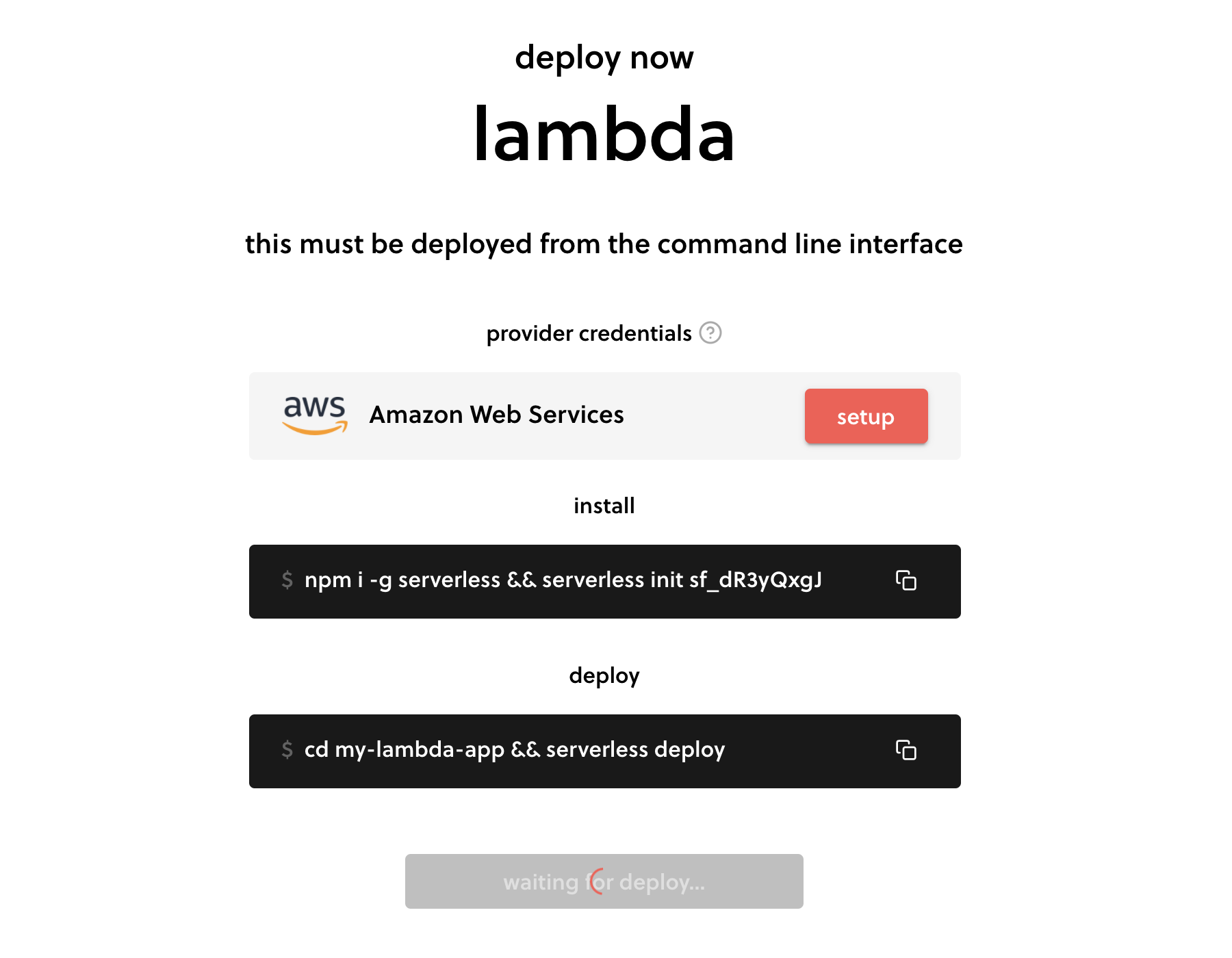

If you haven't done so already within the serverless command, you can deploy the project at any time by running: serverless deploy You can install any example with the create command: # replace folder-name below with the folder name of the example you want to use If the templates proposed by the serverless command do not fit your needs, you can also explore the project examples from Serverless Inc. You can learn more about this in the Core Concepts documentation. This file defines everything that should be deployed to AWS: functions, events, resources and more. The newly created project should contain a serverless.yml file. If you are based in China and prefer to use AWS, set the following environment variable: SERVERLESS_PLATFORM_VENDOR=aws. Note: Users in China are presented with a setup centered around the chinese Tencent provider.
#NPM INSTALL SERVERLESS FREE#
The serverless command will guide you to create a new project, configure your AWS credentials, and optionally set up a free Serverless Dashboard account to monitor, troubleshoot, and test your new service. # Move into the newly created directory cd your-service-name Run the command below and follow the prompts: # Create a new serverless project
#NPM INSTALL SERVERLESS UPGRADE#
On Windows, run: choco upgrade serverless

# You can also restrict the upgrade to the latest v2 version: On MacOS/Linux, you can upgrade the standalone serverless binary by running: serverless upgrade Npm install -g you installed serverless as a standalone binary, read the following section instead. If serverless was installed via NPM, you can upgrade it via: npm install -g serverless Install with Chocolatey: choco install serverless

Then, open another terminal window to run the serverless program. To install a specific version, you may set a VERSION variable, for example: curl -o-L | VERSION=2.72.2 bash To install the latest version, run this command in your terminal: curl -o-L | bash Install as a standalone binary MacOS/Linux If you don't want to install Node or NPM, you can install a standalone binary. We suggest using the latest LTS version of NodeJS. Note: If you don’t already have Node on your machine, install it first. Install the serverless CLI via NPM: npm install -g serverless

Getting started with Serverless Framework’s Open Source CLI and AWS only takes a few minutes. To run a script before npm install, set the script in preinstall in your started with Serverless Framework Open Source & AWS To run custom scripts before or after deployment, you can use the serverless-plugin-scripts plugin to run the scripts at various points of the serverless deploy lifecycle, including before deployment and on finalize. The preinstall, postinstall, pretest, and posttest, scripts are run automatically at each of these steps. To run custom scripts before & after NPM install and running tests, use the lifecycle hooks built into scripts of your package.json file. You can run custom scripts before or after each of these steps if you need to customize the pipeline further. Serverless Framework runs three primary operations on your repository when you have CI/CD configured: (1) install NPM packages via npm install, (2) run tests, if present, with npm test, and (3) deploy your service using sls deploy.


 0 kommentar(er)
0 kommentar(er)
